Pulled pork is a classic BBQ dish loved by many all over the world. While there are many different techniques for cooking this tender and flavorful meat, choosing the right internal temperature is one critical decision that can make all the difference. Many grillmasters swear by pulling their pork at 190°F, while others argue that 205°F is the way to go. But why is there such a discrepancy, and how significant is the temperature difference? In this article, we’ll explain the differences between pulled pork 190 vs 205, which one is better, and how to achieve the perfect consistency every time.
What Is The Traditional Method For Smoking Pulled Pork?
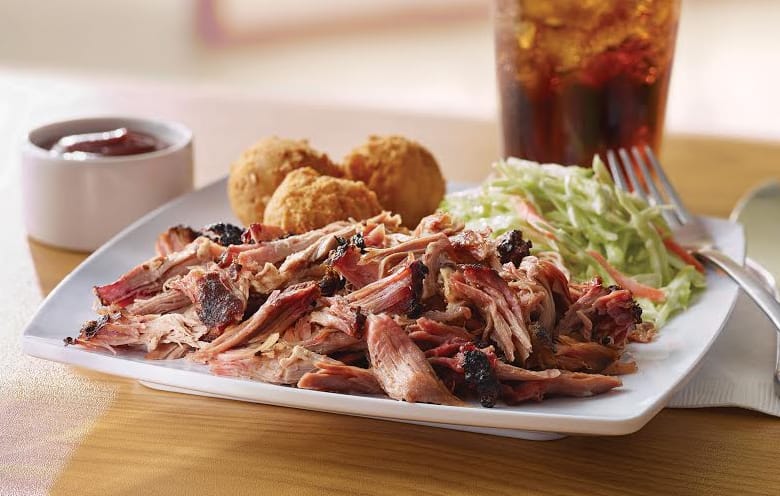
Smoking is a cooking method that involves exposing the meat to smoke from burning wood or charcoal for an extended period. The smoke infuses the meat with flavor and helps to tenderize it. Smoking is typically done at low temperatures and can take anywhere from 6 to 14 hours, depending on the size of the meat.
While smoking, it’s important to maintain a consistent temperature and to check the meat for doneness periodically. You can do this by using a meat thermometer to check the internal temperature of the meat. Once the meat is done, please remove it from the smoker and let it rest for 30 minutes to an hour before shredding it with a fork or meat claws.
What’re the Differences Between Pulled Pork 190 Vs 205?
Regarding pulled pork, two main temperature options are often discussed: 190 and 205 degrees Fahrenheit. According to factual data, the primary difference between these two temperatures is the richness of flavor. The higher fat content in meat cooked to 205 degrees creates a slightly richer taste.
However, it’s important to note that an internal temperature of 190 to 195 degrees Fahrenheit is ideal for tender, juicy pulled pork. While some individuals may prefer to cook their pork to 205 degrees, it ultimately depends on personal preference and the specific meat cut. Regardless, anyone can create a delicious and satisfying batch of pulled pork with the right cooking techniques and temperature monitoring.
Is There A Significant Difference In The Final Flavor Of Pulled Pork Cooked At 190 Degrees Versus 205 Degrees?
The short answer is yes, but it’s not a significant difference that you’ll be able to notice with every single bite. Cooking pulled pork at 190 degrees versus 205 degrees will result in slightly different flavors and textures, but it won’t change your pork taste drastically.
When cooking pulled pork at 190 degrees, you’ll end up with incredibly tender meat with a melt-in-your-mouth texture. The lower temperature allows the meat to break down slowly, resulting in a more delicate texture. However, cooking at this temperature may result in slightly less flavorful meat than if cooked at a higher temperature.
On the other hand, cooking pulled pork at 205 degrees will result in slightly firmer but still very tender meat. The higher temperature allows the meat to cook more quickly, which can result in a slightly more intense flavor. Additionally, cooking at a higher temperature can create a crust on the outside of the meat, which some people prefer.
So, which temperature should you use when cooking your pulled pork? Ultimately, it comes down to personal preference. If you’re looking for incredibly tender and delicate meat, go for 190 degrees. If you want meat with a slightly firmer texture and a more intense flavor, go for 205 degrees. But keep in mind that the differences between the two temperatures are not huge, and whichever temperature you choose, you will still end up with delicious pulled pork.
Can You Use A Higher Temperature Than 190 Degrees For Pulled Pork?
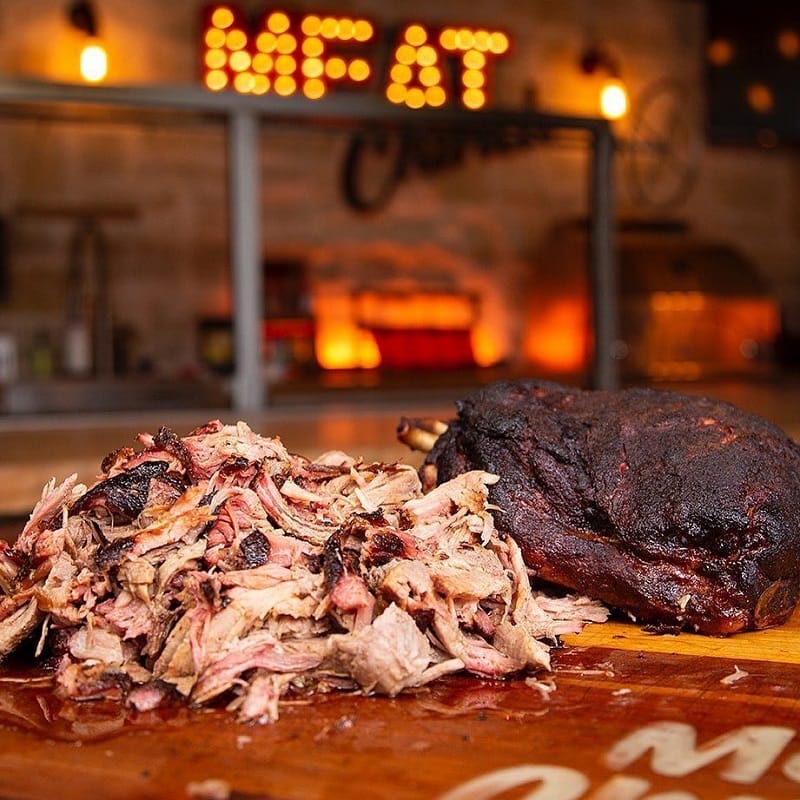
An avid pulled pork lover might wonder whether 190 degrees Fahrenheit is the only ideal temperature for achieving the perfect texture and flavor. To factual, pork shoulder needs to hit a higher temperature to avoid being tough and stringy. While 190 to 195 degrees may be the standard temperature for most people, going slightly higher wouldn’t hurt. The key is to avoid making it too dry by not letting it go significantly above the 190-195 degree range.
So, if you’re experimenting with the temperature for your following pulled pork recipe, remember that you can use a higher temperature than 190 degrees, but tread carefully.
Can You Pull Pork At A Higher Internal Temperature Than 205 Degrees Fahrenheit?
While some may argue that a slightly higher temperature can lead to even more succulent and tender meat, experts advise against it. The ideal internal temperature for pulled pork is 205 degrees Fahrenheit, ensuring the meat will be juicy, falling off the bone, and easy to shred.
Cooking pork at a higher temperature can lead to dry and overcooked meat, which no one wants. Additionally, the safe internal temperature for pork should always be at least 145 degrees Fahrenheit to avoid any potential health risks. Therefore, it is best to stick with the recommended temperature range of 190-205 degrees Fahrenheit for the perfect pulled pork every time.
Which Temperature Is Ideal For Achieving Tender Pulled Pork?
When it comes to achieving tender pulled pork, the ideal temperature is crucial. The meat’s muscle fibers need to break down, resulting in tender meat that falls apart easily. Maintaining a cooking temperature of 225°F (107°C) on the smoker throughout the process is recommended to achieve the juiciest and most tender results.
The internal temperature of the pork butt should be 190 to 195 degrees Fahrenheit for optimal tenderness. Going significantly above this temperature range could make the pork too dry. It is important to note that pork should be cooked to an internal temperature of at least 165°F for food safety.
If you don’t have a meat thermometer, the “poke test” can be used by simply poking the meat with a fork. If it feels soft and tender, it is ready to serve. So, next time you’re smoking pulled pork, remember to maintain the recommended temperature range and internal temperature for the most tender and juicy results.
Read more:
Can You Achieve The Same Results Cooking Pulled Pork At Lower Temperatures?
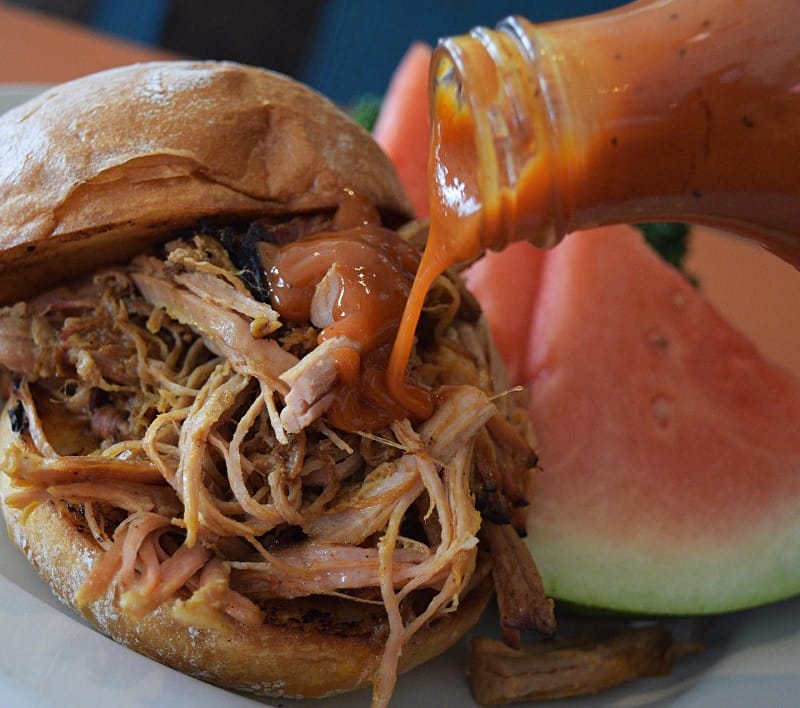
The recommended temperature for cooking pork is 145°F (62.8°C) for food safety, so achieving the perfect pulled pork can be challenging.
While many suggest cooking the pork shoulder to an internal temperature of 190 to 195 degrees Fahrenheit, some wonder if achieving the same results is possible at a lower temperature. While it’s undoubtedly possible to cook pork at a lower temperature, the result may not be as tender and juicy as desired. The temperature of 190-195°F is ideal because it breaks down the meat’s collagen, resulting in moist and tender pulled pork. Hence, cooking the pork shoulder longer is always advisable, allowing it to reach the required temperature and obtain the best results.
How Does Higher Temperature Affect The Texture Of Pulled Pork?
When cooking pork, getting the right temperature is important to achieve the desired texture. If pork is cooked to a temperature of 205°F, the result will be fall-apart tender meat that is perfect for shredding. However, anything above this temperature can leave the pork dry and difficult to work with.
It’s important to remember that pork butt needs to be cooked to at least 190°F before it’s tender enough to shred, and cooking it up to 205°F will only result in a better texture. It’s true that keeping it for longer is not recommended, but with the right timing and temperature, the texture of the pulled pork will be just right, whether for a cozy family dinner or a big barbecue party.
What Factors Affect The Internal Temperature Of Pork When Cooking?
One of the most important aspects of cooking pork is getting the internal temperature right. This can be challenging, especially if you are unfamiliar with the factors that affect the internal temperature of pork when cooking. We will explore these factors and how they can impact the cooking process.
- The Cut of Pork: Different cuts of pork have different levels of fat, muscle, and connective tissue, which can impact how long it takes to cook them and what temperature is needed. For example, a pork tenderloin is a lean cut of meat that cooks quickly and requires a lower internal temperature than a pork shoulder, which has more fat and connective tissue and requires a longer cook time and higher internal temperature.
- The Size of the Pork: A smaller cut of pork will cook more quickly than a larger cut, requiring a lower internal temperature. For example, a pork chop may only take 10-15 minutes, while a pork roast may take several hours at a higher interior temperature.
- The Cooking Method: Grilling, baking, broiling, and roasting all require different internal temperatures to ensure that the meat is cooked thoroughly and safely. For example, grilling may require a higher interior temperature than baking, as the meat is exposed to direct heat and can cook more quickly.
- The Starting Temperature: If the pork is taken directly from the refrigerator, it will take longer to cook and require a higher internal temperature than if it is allowed to come to room temperature before cooking. This is because the meat will require more time to cook from a colder starting temperature, and the heat will need to penetrate deeper into the meat to reach the desired internal temperature.
- The Oven Temperature: If the oven temperature is too low, the pork may take longer to cook and require a higher internal temperature to reach the desired level of doneness. On the other hand, if the oven temperature is too high, the pork may cook too quickly and not reach the desired internal temperature.
How Can You Ensure That Pork Butt Is Fully Cooked At 190 Or 205 Degrees Fahrenheit?
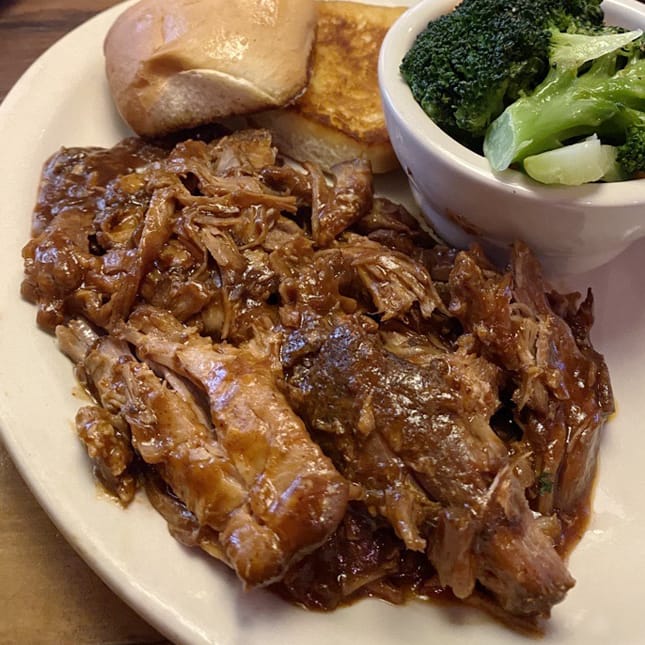
The ideal temperature for pork butt is between 190 and 205 degrees Fahrenheit, but how can you ensure it’s fully cooked? Let’s explore some tips for cooking pork butt to perfection:
- Use a meat thermometer: The most accurate way to ensure your pork butt is fully cooked. Insert the thermometer into the thickest part of the meat, careful not to touch any bones.
- Cook low and slow: Pork butt requires slow cooking to become tender. Set your oven or smoker to a low temperature (around 225 degrees Fahrenheit) and cook the pork butt for several hours.
- Rest the meat: After cooking, let the pork butt rest for at least 10 minutes before slicing. This allows the juices to redistribute and ensures the meat is tender and juicy.
- Check for tenderness: The meat should be fork-tender and easily pulled apart. If it’s still tough, continue cooking until it reaches the ideal temperature range.
- Use a rub or marinade: Rubs typically contain a mix of spices and herbs, while marinades are made with acidic ingredients like vinegar or citrus juice. Both can help break down the connective tissues and tender the meat.
Cooking pork butt to perfection requires time, temperature, and technique. Next time you’re craving this flavorful cut of meat, put these tips into practice and enjoy a mouth-watering meal!
How Can You Tell When Pulled Pork Is Fully Cooked And Ready To Be Pulled?
The answer is simple: use a meat thermometer. The internal temperature of the pork should reach 190 to 205 degrees Fahrenheit, which is the point at which the fat and connective tissue has broken down, and the meat is tender and juicy. You can insert the thermometer into the thickest part of the pork to get an accurate reading.
Another way to test if the pork is fully cooked is by using the “bone test.” If the pork is cooked perfectly, the bone should easily pull away from the meat without resistance. If the bone is firmly attached to the meat, the pork must cook for a little longer.
What Are The Risks Of Undercooked Pork?
Undercooked pork can pose a serious health risk to those who consume it. This is because pork can be contaminated with various bacteria and parasites that can cause serious illnesses such as food poisoning, salmonella, and trichinosis.
- One of the main bacteria commonly found in pork is E. coli. This bacteria is found in the intestines of animals and can be transferred to the meat during the slaughtering process. If the pork is not cooked to a high enough temperature, the E. coli bacteria can survive and cause illness in those who consume it.
- Another common bacteria found in pork is Salmonella. This bacteria is also found in the intestines of animals and can be transferred to the meat during the slaughtering process. If the pork is not cooked to a high enough temperature, the Salmonella bacteria can survive and cause illness in those who consume it.
- Trichinella is a parasite that is commonly found in pork. This parasite can cause trichinosis, a serious illness that can cause symptoms such as fever, muscle pain, and swelling around the eyes. In severe cases, trichinosis can lead to death.
Tips For Achieving Perfectly Tender, Juicy Pulled Pork
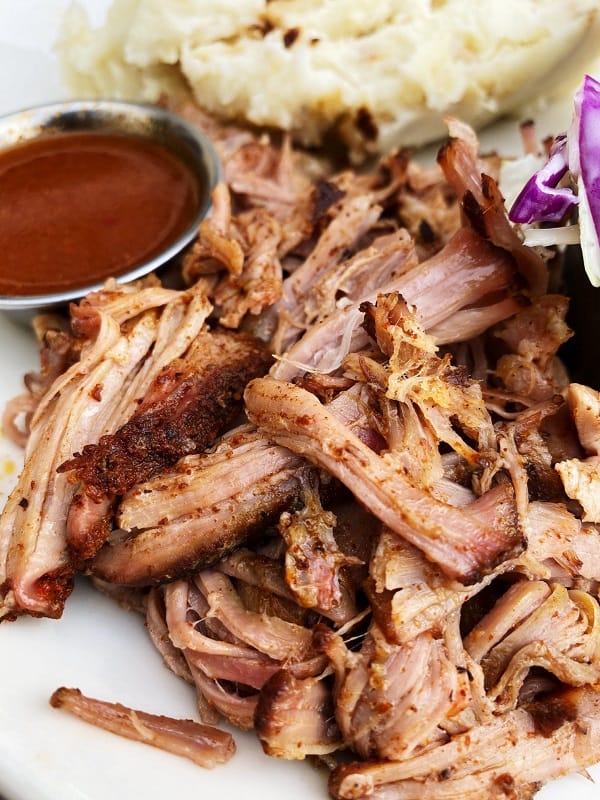
You can use several tips and tricks to take your pulled pork to the next level. Here are some tips for achieving perfectly tender, juicy pulled pork.
- Choose the Right Cut of Meat: Pork shoulder is ideal, as it has plenty of fat and connective tissue that will break down during cooking, resulting in tender meat. Look for a pork shoulder roast with a good amount of marbling.
- Brine the Pork Shoulder: Brining is a process of soaking meat in a salt solution, which helps to keep it moist and tender during cooking. You can brine the pork shoulder for up to 24 hours before cooking. To make a simple brine, dissolve 1/2 cup of salt and 1/2 cup of brown sugar in 1 gallon of water, then add the pork shoulder and refrigerate.
- Use a Dry Rub: A dry rub is a mixture of herbs and spices rubbed onto the meat before cooking. This adds flavor and helps to form a crust on the outside of the meat.
- Slow Cook the Pork Shoulder: Slow cooking is the key to achieving tender, juicy pulled pork. You can cook the pork shoulder in a smoker, grill, or slow cooker. You can baste the meat with apple juice or beer to keep it moist during cooking.
- Let the Meat Rest: Once the pork shoulder is cooked, it’s essential to let it rest for at least 30 minutes before pulling it apart. This allows the meat to relax and the juices to redistribute, resulting in more tender, flavorful meat. After resting, use two forks to pull the meat apart into shreds, discarding any excess fat and connective tissue.
- Serve with Your Favorite Accompaniments: A simple barbecue sauce, coleslaw, pickles, or spicy salsa. Whatever you choose, make sure it complements the flavor of the meat and adds an extra layer of texture.
Pulled Pork Recipe
If you need to cook pulled pork but are unsure about your recipe. Don’t worry. Here’s the recipe for the perfect pulled pork that will make you look like a professional chef.
Ingredients:
- 5-7 pound pork butt or pork shoulder, leave the fat cap on
- 3 tablespoons olive oil for rubbing on meat
- 1 teaspoon liquid smoke*, optional, for rubbing on meat
- 2 tablespoons vegetable oil for searing, more as necessary
For the rub/marinade:
- 1 tablespoon kosher salt, use 2 and 1/2 teaspoons if using table salt
- 2 teaspoons black pepper
- 1 tablespoon paprika
- 2 teaspoons garlic powder
- 2 teaspoons onion powder
- 1 teaspoon chili powder
- 1 teaspoon cayenne pepper
- 2 teaspoons cumin
- 1 teaspoon dry mustard powder
- 1/3 cup brown sugar, packed
To serve:
- Barbecue sauce, homemade or store-bought
- Brioche hamburger buns, if you’re making sandwiches
- Butter softened
- Coleslaw
Perform:
- Divide your pork butt or shoulder into 3 equal pieces to hasten cooking and enhance browning. Afterward, dry the meat, apply 3 tablespoons of olive oil and 1 teaspoon of liquid smoke (if desired), and then rub it with all but 3 tablespoons of the spice mixture. Allow the pork to soak in the large ziplock for 6 to 48 hours.
- Before placing the meat in the oven, please remove it from the fridge and let it sit at room temperature for an hour, guaranteeing more uniform cooking and preventing a parched exterior.
- To get started, preheat your oven to 425 degrees Fahrenheit and wait for it to reach the desired temperature for at least 20 minutes. Next, place an oven-proof wire cooling rack on top of a baking sheet with raised edges and spray it with a non-stick spray. Finally, pour 1 and 1/2 cups of water into the bottom of the baking sheet to create a moist atmosphere when cooking the pork.
- Take out the pork from the ziplock and use the remaining 3 tablespoons of the spice rub to rub each piece. Place the pork on the cooling rack with the fat caps on top and ensure the pieces don’t touch each other.
- Roast the pork for 30 minutes at 425 degrees to sear the edges. Then, lower the oven temperature to 300 degrees and open the door for 30-60 seconds to cool it down. Keep roasting the pork at 300 degrees for 3-5 hours, adding more water to the pan when needed.
- When checking if your pork is cooked, rely on a meat thermometer. Once the thermometer reads between 190 to 205 degrees F, take the pork out of the oven. Be careful not to let the temperature go above 205 degrees F, as it will continue to rise slightly after removing it from the oven.
- Let the pork rest for 15-20 minutes by covering it with foil. Afterward, place the pork on a cutting board and use two forks to shred it. Make sure to remove any unwanted gristle, but keep the fat and mix it in with the shredded meat.
Popular Seasonings And Rubs To Use When Smoking Pulled Pork
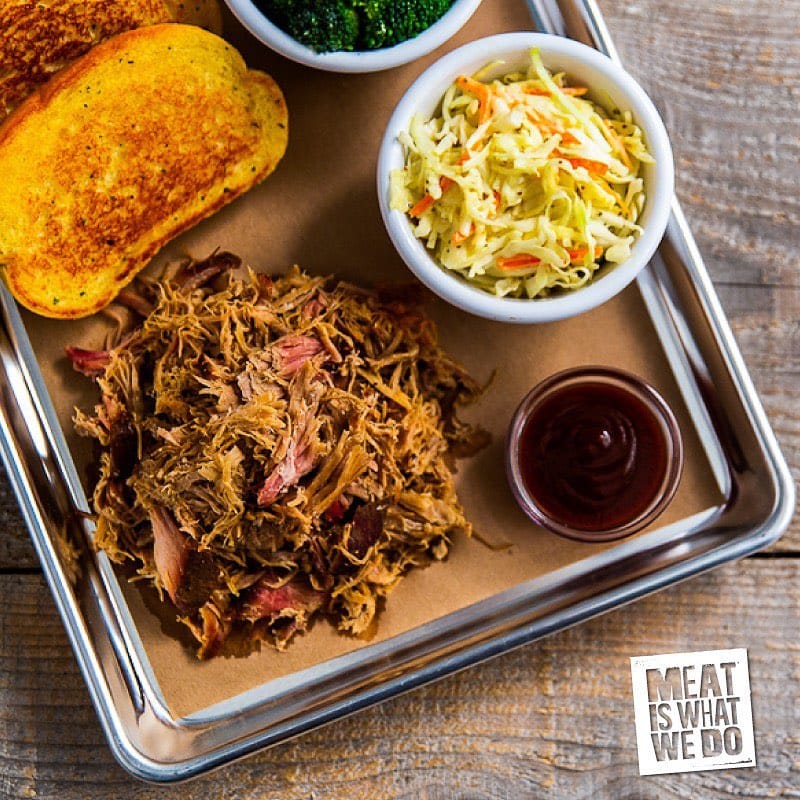
Whether you’re a seasoned pitmaster or just starting smoking meats, knowing the most popular seasonings and rubs to use when smoking pulled pork is important. Here, we’ll cover some of the best options and explain how to use them to elevate your next pulled pork dish.
1. Dry Rubs
- Dry rubs are a classic choice for smoking pulled pork. They’re easy to make and can be customized to your liking. Some popular ingredients for pulled pork in a dry rub include brown sugar, paprika, salt, black pepper, garlic powder, onion powder, and cumin. You can also add a little heat with cayenne pepper or chili powder.
- To use a dry rub on your pork shoulder, cover the meat generously with the rub and let it sit for at least an hour before smoking. You can let the pork shoulder sit in the rub overnight in the refrigerator for even more flavor.
2. Mustard-Based Rubs
- Mustard-based rubs may sound strange, but they’re popular for smoking pulled pork in the southern United States. The mustard acts as a binder for the other ingredients and helps create a flavorful crust on the meat.
- Mix yellow mustard, brown sugar, salt, black pepper, garlic powder, and onion powder to make a mustard-based rub. Rub the mixture all over the pork shoulder and let it sit for at least an hour before smoking.
3. Vinegar-Based Rubs
- Vinegar-based rubs are another popular choice for smoking pulled pork in the southern United States. They’re tangy and flavorful with a little bit of heat.
- Mix apple cider vinegar, brown sugar, salt, black pepper, cayenne pepper, and paprika to make a vinegar-based rub. Rub the mixture all over the pork shoulder and let it sit for at least an hour before smoking.
4. BBQ Sauce
- If you’re a fan of BBQ sauce, you can use it to add flavor to your pulled pork. You can brush the sauce onto the pork shoulder during the smoking process or mix it with the pork after it’s pulled.
- Some popular BBQ sauces for pulled pork include Kansas City-style, Carolina-style, and Memphis-style.
5. Injected Marinades
- Injected marinades are another way to add flavor to your pulled pork. You can use a marinade injector to inject a mixture of liquids and spices directly into the meat.
- Some popular ingredients to include in an injected marinade for pulled pork include apple cider vinegar, Worcestershire sauce, brown sugar, salt, and black pepper.
How Do You Store Leftover Pulled Pork To Ensure It Stays Fresh And Flavorful?
Here are some tips and tricks to store your pulled pork properly:
- Store it in an airtight container: When storing pulled pork, you want to keep it in an airtight container. This will help prevent moisture from getting in and keep the meat fresh. You can use a plastic container, a resealable bag, or even wrap it tightly in aluminum foil.
- Please keep it in the fridge: Once your pulled pork has cooled down, you can store it. This is the best way to keep it fresh and flavorful. You can store it for up to four days in the fridge.
- Freeze it for longer storage: If you want to store your pulled pork for longer, you can freeze it. Please put it in an airtight container, leaving some space at the top for expansion. You can freeze it for up to six months.
- Reheat it properly: When it’s time to eat your leftover pulled pork, you want to ensure you reheat it properly. You can use a microwave, oven, or even a stovetop. Make sure it’s heated all the way through before serving.
- Add some sauce: If your pulled pork has dried out, add some sauce to give it moisture and flavor. You can use your favorite BBQ sauce or even some broth.
FAQs About Pulled Pork 190 vs 205
Should You Let The Pork Rest Before Pulling It Apart?
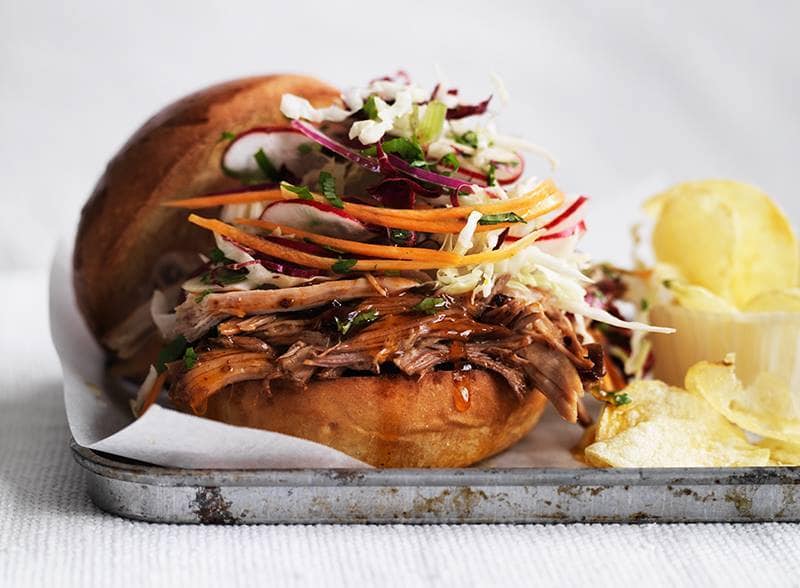
The answer is a resounding yes. Resting the meat allows the juices to redistribute throughout it, making it tender and succulent. While the minimum resting time for a pork butt is 15 minutes, most people prefer to rest it for 30-45 minutes or even up to 2 hours.
The Bearded Butchers recommend a minimum of 15 minutes for a six to eight-pound piece of pork. It’s important to note that you cannot rest the pork forever, or it will start to get cold. Resting the pork before pulling it apart is essential for a delicious and enjoyable meal.
Can You Make Pulled Pork In The Oven Or On A Grill Instead Of A Smoker?
If someone wants to enjoy the taste of smoky pulled pork but doesn’t own a smoker, they can certainly make it in the oven or on a grill. They can achieve the same delicious flavor and tender texture using the same seasoning method as in a smoker and cooking low and slow.
Additionally, searing the pork before cooking can further enhance the taste. Many home cooks prefer baking pulled pork in the oven with a dry rub for a simple and effortless option. Making pulled pork in the oven or on a grill can be just as satisfying as smoking it, especially when wanting to serve a mouth-watering dinner without the fuss.
Which Wood Is Best For Smoking Pork?
When it comes to smoking pork, there are various wood options. However, based on facts, some woods are better suited for pork than others.
- The best wood for smoking pork is apple wood. It provides a sweet and mild smoke that enhances the natural flavors of the pork, making it juicy and tender.
- Hickory wood is another versatile option commonly used for pork as it gives a strong and authentic smoke taste.
- Maple wood is also an excellent choice, producing a solid smoke that compliments the meat.
- Fruitwood such as cherry and peach are also recommended as they add a fruity sweetness to the pork.
Ultimately, whichever wood you choose depends on your preferences and the pork cut you’re cooking.
Is It Safe To Pull Pork At 190 Degrees Fahrenheit?
It is safe to pull pork at 190 degrees Fahrenheit. According to the USDA, pork is safe when cooked to 145 degrees Fahrenheit. However, an internal temperature of 190 to 195 degrees Fahrenheit for pulled pork is ideal for achieving that tender and juicy consistency. It is important to note that pulling pork at higher temperatures can result in the meat becoming too dry. So, if you want perfectly cooked pulled pork, aim for that sweet spot of 190 to 195 degrees Fahrenheit.
Can You Achieve The Same Level Of Tenderness With Bone-In And Boneless Pork Butts?
While there are some small differences, they are almost negligible. Bone-in pork butt is said to have better flavor, and the bone acts as a doneness indicator due to the pull-back of the meat from the bone end (shrinkage). However, if you prefer a boneless pork butt but can only find bone-in, you can remove the bone yourself. And while boneless pork shoulder may not have the same level of internal fat as pork butt, you can still smoke it to get the same level of tenderness.
Conclusion
So, which temperature is better? Ultimately, it comes down to personal preference. If you prefer your pulled pork to be more tender and falling apart, cooking it to 205 degrees Fahrenheit may be the way to go. However, if you prefer a slightly pinker, more flavorful meat, cooking it to 190 degrees Fahrenheit may be the better choice.
In conclusion, the debate over pulled pork 190 vs 205 will likely continue for years. Both temperatures can produce delicious pulled pork, so it ultimately comes down to your preference. Experiment with both temperatures and see which one you prefer. Regardless of which temperature you choose, one thing is certain – a perfectly cooked pulled pork is beautiful and a true barbecue masterpiece.
References:
- https://www.thekitchn.com/heres-everything-you-need-to-know-about-pork-shoulder-4-ways-to-cook-it-242362
- https://www.askchefdennis.com/perfect-pulled-pork/
- https://zgrills.com.au/best-wood-for-smoking-pork/

Hey readers! Chip Holland here, and I’m a Manager of this website. My passion for writing about it only matches my passion for BBQ. Follow my blog for mouth-watering recipes, tips, and tricks for the perfect smoke, grill, and BBQ. I’m sure you won’t be disappointed!
